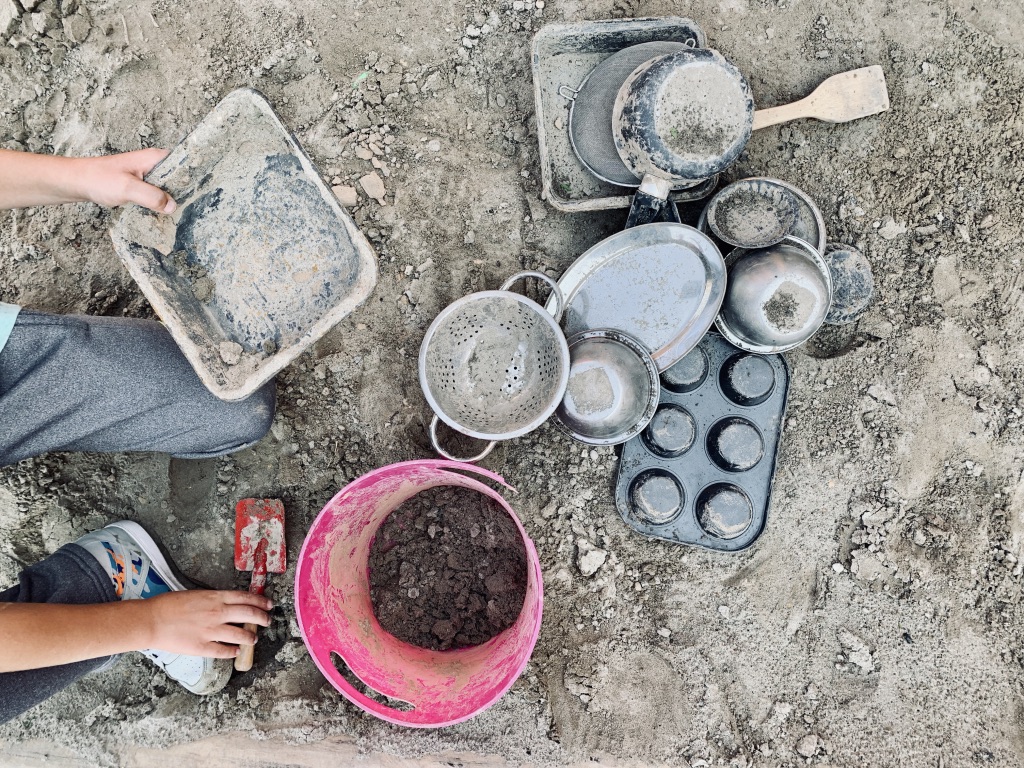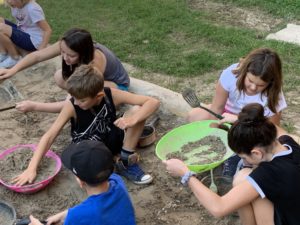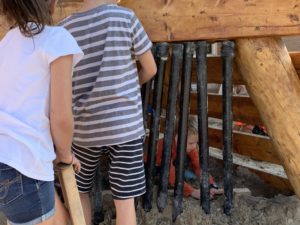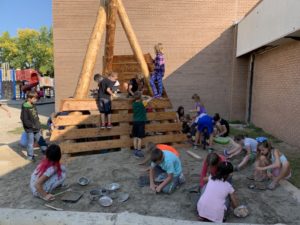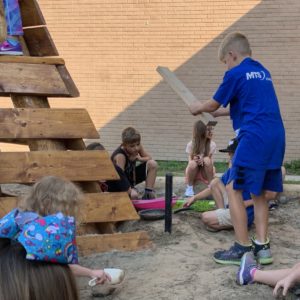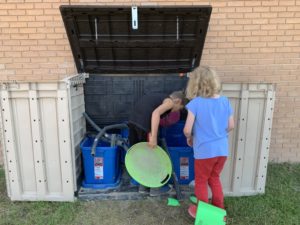Thirty children crowded into the space of a mid-sized sandbox holding pipes, 2x4s and metal pots and pans for 30 minutes with little supervision sounds like a recipe for disaster! Trust me, it’s quite the opposite.
This year, Niverville Elementary School added a sandbox with a wooden tipi structure and a small shed filled with loose parts for the children to play with in the sand. The response from the children has been exciting and the staff talk about how incredibly self managed the play and conflict is in this area of the playground.
I’m struck by the trust that these teachers and principals have put in these students. They’ve trusted them to use the materials with respect and care. They’ve trusted them to figure out and manage what is safe and what isn’t, how to share the materials, how to manage many people in a small space, and how to collaboratively create! And the children have risen to the challenge!
It’s been two weeks and the teachers say that there are often 30-40 children playing in this small space. Problems arise, but because the loose parts invite collaboration (as opposed to competition, like on the soccer field), children are motivated to work together toward a common goal and they are deeply invested in solving these problems themselves.
I heard the children say,
“Guys! We gotta help each other here!”
“One of us has to hold this, okay? We’re doing really good here.”
Many of the creations and tasks the children attempt in this space cannot be done as an individual; they must be done in community, with the help of each other. Building ramps, tables and filling the cracks between the 2x4s with sand all take the work of a community of children.
At times I’ve said and heard said, “These kids just can’t work together. They have so much trouble with collaboration.” In sitting and observing loose parts play in the sandbox, I wonder whether these statements are only true when the task we provide for children is not developmentally appropriate, when it’s too rigid, or when it’s not meaningful for their lives.
When we provide meaningful developmentally appropriate opportunities for children to collaborate and problem solve, maybe they can work together and collaborate. Maybe they can do it better than us grown ups. Maybe we can learn more about what meaningful learning can look like and sound like by taking our cues from these children.
